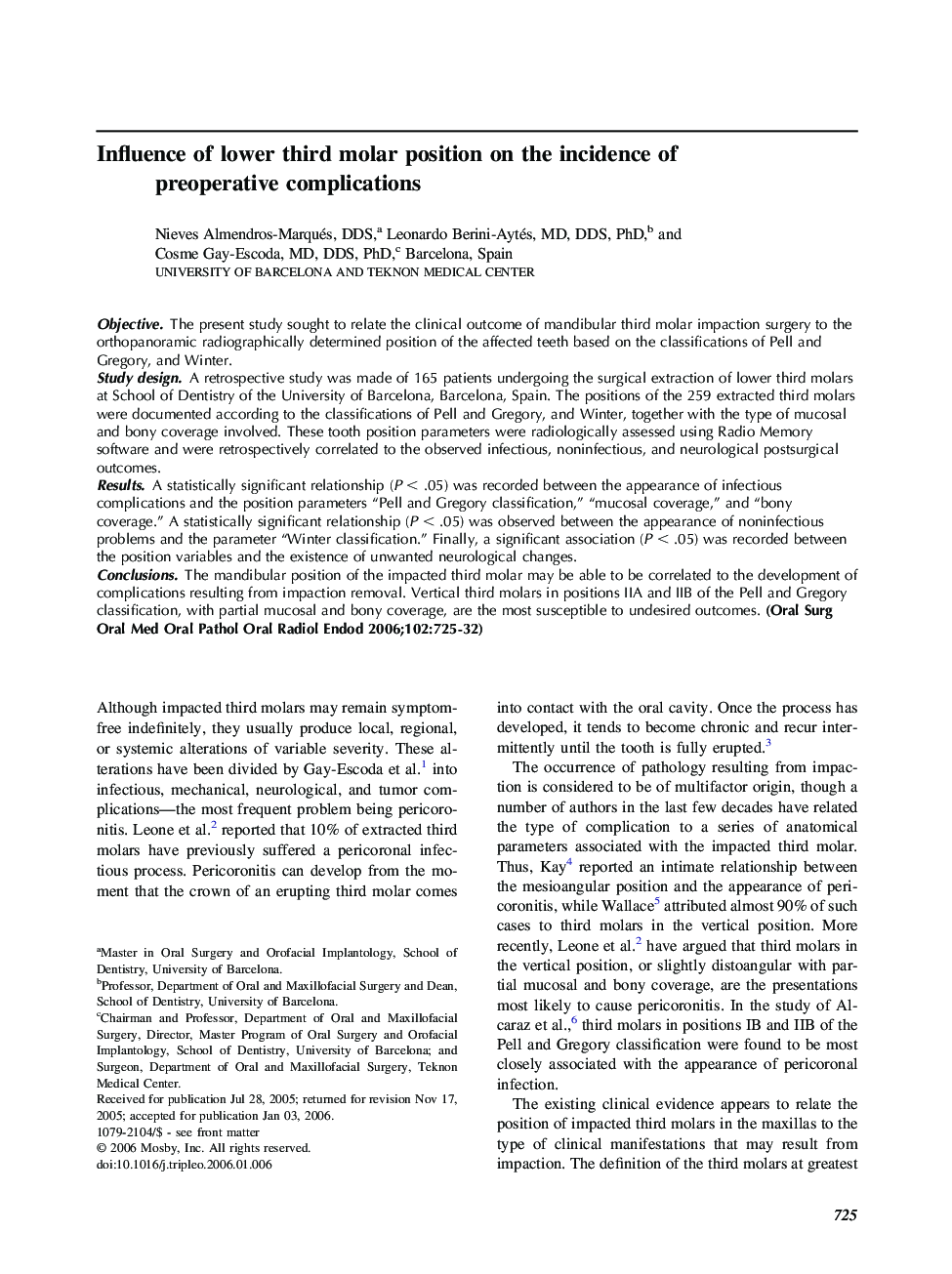| Article ID | Journal | Published Year | Pages | File Type |
|---|---|---|---|---|
| 3169699 | Oral Surgery, Oral Medicine, Oral Pathology, Oral Radiology, and Endodontology | 2006 | 8 Pages |
ObjectiveThe present study sought to relate the clinical outcome of mandibular third molar impaction surgery to the orthopanoramic radiographically determined position of the affected teeth based on the classifications of Pell and Gregory, and Winter.Study designA retrospective study was made of 165 patients undergoing the surgical extraction of lower third molars at School of Dentistry of the University of Barcelona, Barcelona, Spain. The positions of the 259 extracted third molars were documented according to the classifications of Pell and Gregory, and Winter, together with the type of mucosal and bony coverage involved. These tooth position parameters were radiologically assessed using Radio Memory software and were retrospectively correlated to the observed infectious, noninfectious, and neurological postsurgical outcomes.ResultsA statistically significant relationship (P < .05) was recorded between the appearance of infectious complications and the position parameters “Pell and Gregory classification,” “mucosal coverage,” and “bony coverage.” A statistically significant relationship (P < .05) was observed between the appearance of noninfectious problems and the parameter “Winter classification.” Finally, a significant association (P < .05) was recorded between the position variables and the existence of unwanted neurological changes.ConclusionsThe mandibular position of the impacted third molar may be able to be correlated to the development of complications resulting from impaction removal. Vertical third molars in positions IIA and IIB of the Pell and Gregory classification, with partial mucosal and bony coverage, are the most susceptible to undesired outcomes.
